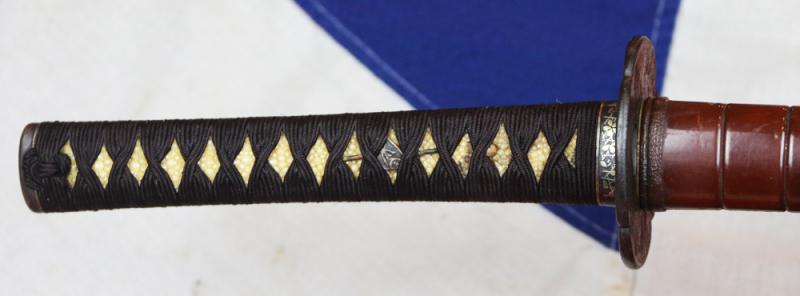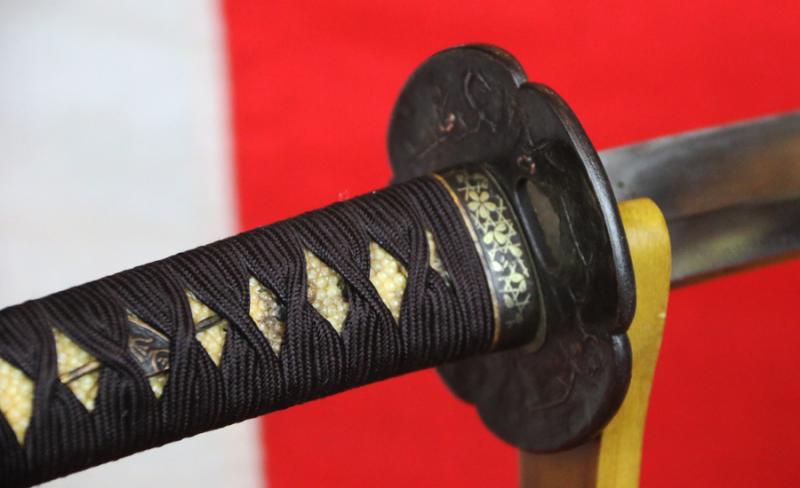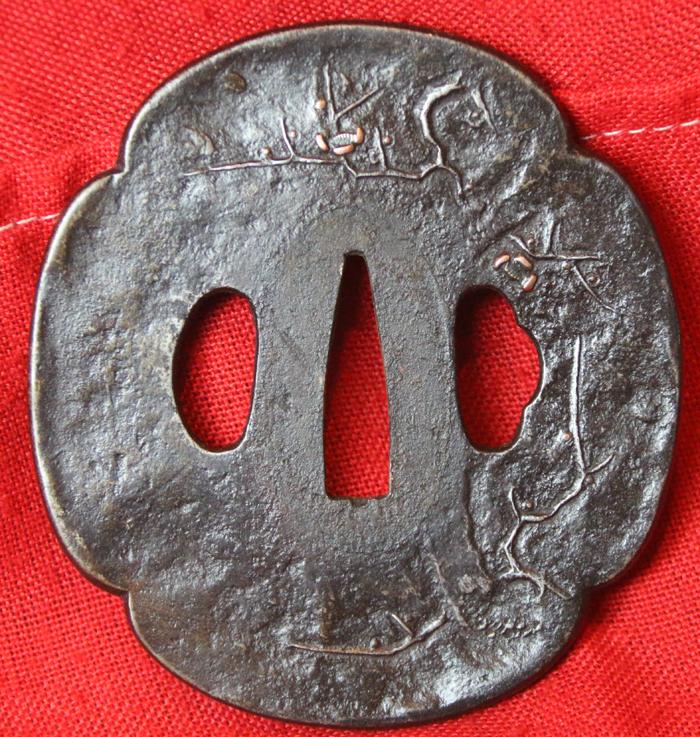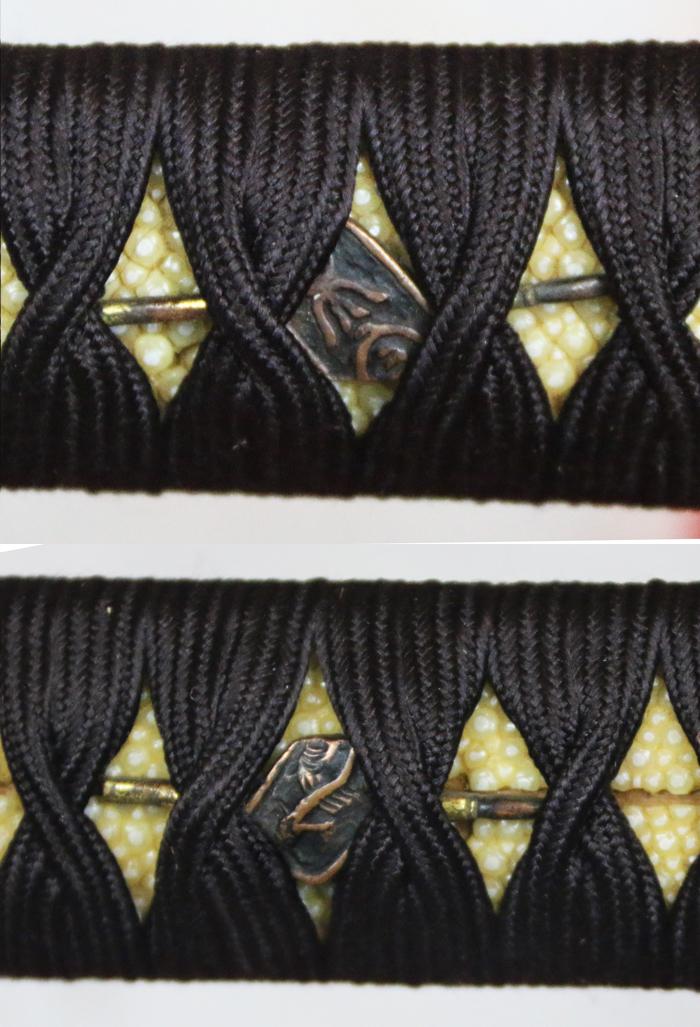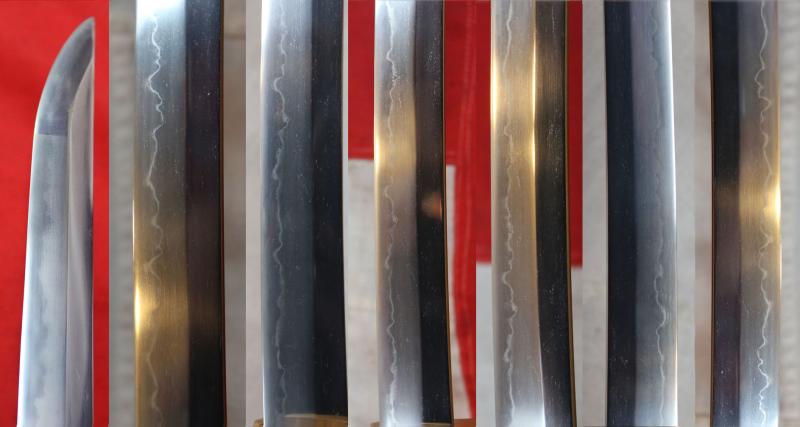A Most Handsome Shinto Katana That Would Grace Any Museum Grade Collection. Signed Mutsu Daijo Fujiwara Kaneyasu
Late 17th century sword, bearing signature that approximately translates to "of the Fujiwara Clan, the Daijo (a honourific lordship title) of Mutsu Province, Kaneyasu made this''. With all original Edo period koshirae sword mounts, including a superb antique original Edo 'lobster scale' cinnabar urushi lacquer saya.
A truly stunning combination of materials that has created a iconic Japanese Art Sword of ancient tradition.
Cherished for its infinite versatility, urushi is a distinctive art form that has spread across all facets of Japanese culture from the tea ceremony to the saya scabbards of samurai swords
Japanese artists created their own style and perfected the art of decorated lacquerware during the 8th century. Japanese lacquer skills reached its peak as early as the twelfth century, at the end of the Heian period (794-1185). This skill was passed on from father to son and from master to apprentice.
The varnish used in Japanese lacquer is made from the sap of the urushi tree, also known as the lacquer tree or the Japanese varnish tree (Rhus vernacifera), which mainly grows in Japan and China, as well as Southeast Asia. Japanese lacquer, 漆 urushi, is made from the sap of the lacquer tree. The tree must be tapped carefully, as in its raw form the liquid is poisonous to the touch, and even breathing in the fumes can be dangerous. But people in Japan have been working with this material for many millennia, so there has been time to refine the technique!
Higo school silver inlaid tettsu fuchi kashira and iron plate tsuba. very interesting menuki of a panel separated and placed over two bows, decorated with relief kanji. Beautiful blade with a gradually undulating gunome hamon. An impressive sprauncy sword almost certainly made for a mounted samurai considering its power and dimensions.
Of all the weapons that man has developed since our earliest days, few evoke such fascination as the samurai sword of Japan. To many of us in the, the movie image of the samurai in his fantastic armour, galloping into battle on his horse, his colourful personal flag, or sashimono, whipping in the wind on his back, has become the very symbol of Japan, the Empire of the Rising Sun. And, truly, to the samurai of real life, nothing embodied his warrior's code of Bushido more than his sword, considered inseparable from his soul.
Indeed, a sword was considered such a crucial part of a samurai's life that when a young samurai was about to be born, a sword was brought into the bedchamber during the delivery. When the time came for an old samurai to die and cross over into the White Jade Pavilion of the Afterlife his honoured sword was placed by his side. Even after death, a daimyo, or nobleman, believed he could count on his samurai who had followed him into the next world to use their keen blades to guard him against any demons, just as they had wielded their trusty weapons to defend him against flesh-and-blood enemies in this life. In a samurai family the swords were so revered that they were passed down from generation to generation, from father to son. If the hilt or scabbard wore out or broke, new ones would be fashioned for the all-important blade. The hilt, the tsuba (hand guard), and the scabbard themselves were often great art objects, with fittings sometimes of gold or silver. The hilt and scabbard were created from the finest hand crafted materials by the greatest artisans that have ever lived. Often, too, they told a story from Japanese myths. Magnificent specimens of Japanese swords can be seen today in the Tokugawa Art Museum's collection in Nagoya, Japan. The saya has a few age seam lines, but at all detrimental to its beauty and entirely commensurate to its age
Blade 29 inches tsuba to tip
Code: 24040
8500.00 GBP



